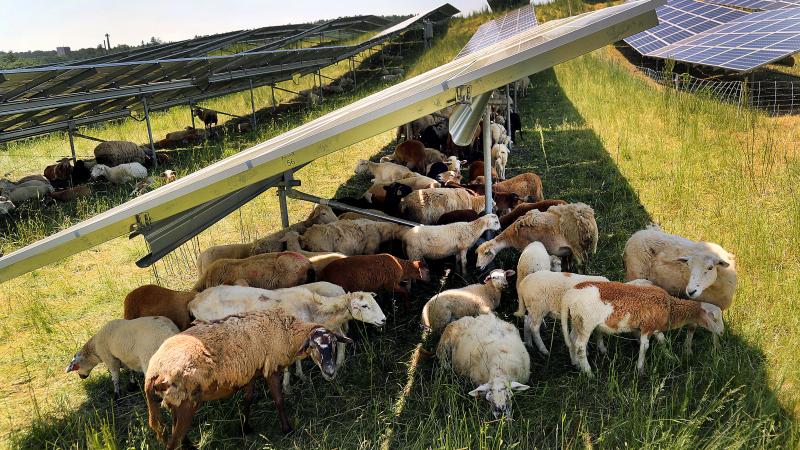Enviro-Activist groups take in nearly 10 times the funding as fossil fuel advocates, analysis says
For every dollar that was received by oil and gas industry groups and climate-skeptical conservative and libertarian nonprofits, $9.60 went to nonprofits that fight against the use of oil, gas and coal.
Climate activists often paint “big oil” as a group of powerful corporations spending billions of dollars to spread a message that protects and advances their industry, while those with a countering message paint themselves as humble grassroots underdogs.
The data gives that narrative the lie. A Just the News analysis of 2021 tax documents of major anti-fossil fuel environmental and climate nonprofits shows that for every dollar that was received by oil and gas industry groups and climate-skeptical conservative and libertarian nonprofits, $9.60 went to nonprofits who fight against the use of oil, gas and coal.
“The media and activist groups would like you to think the only reason people use oil is because of really good advertising and lobbying by oil companies, neither of which is true. Our advertising is lame and our advocacy is always outspent and certainly outnumbered,” Tim Stewart, president of the U.S. Oil and Gas Association told Just the News.
Who's the real David or Goliath?
A sample of fifteen large environmental groups whose mission, campaigns or focus involves campaigning against fossil fuels to stop climate change shows they had $5 billion in gross receipts in 2021, according to the groups’ 990 nonprofit tax forms.
Gross receipts, according to the Internal Revenue Service, are the total amounts the organization received from all sources during its annual accounting period, without subtracting any costs or expenses.
The same year, the ten largest oil and gas industry groups took in $373 million in gross receipts. Eight large conservative and libertarian nonprofits that defend the coal, oil and gas industries took in $145 million in 2021. Combined with industry groups, they had $519 million in gross receipts in 2021 — one tenth the amount anti-fossil fuel groups took in.
“The evidence shows that the David and Goliath here is completely the opposite of what the left says,” Hayden Ludwig, director of policy research for Restoration of America, told Just the News.
These 15 environmental groups were selected for being among the largest nonprofits and for having missions and campaigns that are often focused on the elimination of the use of fossil fuels and the promotion of the wind and solar industry.
The groups included in the analysis are the Rocky Mountain Institute, Sierra Club, Natural Resource Defense Council, Environmental Defense Fund, EarthJustice, Climate Imperative, Greenpeace, 350.org, Climate Emergency Fund, Friends of the Earth, Center for Biological Diversity, Climate Reality Project, The Nature Conservancy, National Wildlife Federation, and ClimateWorks.
This list isn’t comprehensive. It doesn’t include smaller groups, even though they can wield enormous influence. For example, "Covering Climate Now" bills itself as a resource for journalists covering climate change and energy, but its content is entirely biased toward an anti-fossil fuel perspective.
The group boasts partnerships with 500 media outlets reaching an audience of 2 billion people. Covering Climate Now’s fiscal sponsor is The Fund for Constitutional Government, which raked in $4.9 million in 2021.
The list also doesn’t include hundreds of smaller groups with a local or regional focus, such as the Western Watersheds Project, which had $1.3 million in gross receipts in 2021.
Restoration News, a publication of Restoration of America, calculated the donations for 200 environmental groups in 2022 to be $3.4 billion.
The Just the News analysis doesn’t include foundations that provide grants to anti-fossil fuel groups, like the Rockefeller Foundation, whose total assets in 2021 came to nearly $7.5 billion. Another funding source for anti-fossil fuel actions was the Climate Emergency Fund, which provides grants to dozens of climate activist groups. Some of the grant money from these foundations would have been captured in the gross receipts of the groups included in this analysis.
The analysis only captured donations in 2021, since that is the latest year in which all 990 nonprofit tax forms are publicly available. There are large donations outside that year. Billionaire and former Mayor of New York Michael Bloomberg plopped down $1 billion of his own money through his Bloomberg Philanthropies, on two campaigns to stop the world’s consumers from using fossil fuels. The donations came in two chunks to the Sierra Club, a $500 million pot for a campaign against coal in 2019 and a $500 million pot to extend that to suppressing the use of natural gas last year.
George Soros, and his "Open Society Foundation" have donated millions to similar causes.
“The Bezos/Soros/Bloomberg billionaires combined with the billionaire widows and ex-wives money has saturated the advocacy world with cash,” Stewart said.
Pro-fossil fuels
The list of industry and conservative groups also isn’t comprehensive. The industry groups included in the analysis are the American Petroleum Institute, Western Energy Alliance, Independent Petroleum Association of America, Western States Petroleum Association, American Coal Council, U.S. Oil and Gas Association, Texas Oil and Gas Association, New Mexico Oil and Gas Association, Society of Petroleum Engineers.
The conservative and industry nonprofits included in the analysis are the Heritage Foundation, the Heartland Institute, the Competitive Enterprise Institute, Institute for Energy Research, American Energy Alliance, CO2 Coalition, Committee for a Constructive Tomorrow, and Restoration of America.
The analysis excludes groups that give little to no attention to climate and energy issues, such as Focus on the Family, and includes only state-level oil and gas industry groups in the largest oil- and gas-producing states — Texas, New Mexico and North Dakota. The excluded groups, such as the Petroleum Association of Wyoming, which had less than $1 million in gross receipts in 2021, wouldn’t take in enough money to change the ratio of spending in this analysis by much.
Ludwig, with Restoration of American said the “real plucky hero” advocating for affordable reliable energy and the prosperity it brings work with far fewer resources than those who advocate against oil, gas and coal.
“There is a massive alignment of big government, big business, and these big activist groups in this unholy trinity, who are really out to screw the consumer by robbing you of the ability to have a car you can afford, the plane that takes you to vacation destination, the food that is trucked to the grocery store, the natural gas that provides the electricity that's going into keeping that food cold on the aisle. The idea that the right is this cabal that stops action on climate change is just nonsense created by the left’s media machine to mask the reality of who's really got the billions of dollars trying to devastate the future of our country,” Ludwig said.
Other funding
The analysis doesn’t include advertising by oil companies. In 2020, three researchers quantified the entire advertising budgets of five major oil companies. They found that over a 29 year period, the combined spending globally was $3.6 billion — or about $124 million per year and just under $25 million each. They did not separate from that number the amount of advertising dollars targeted to straight-forward "branding" from "advocacy."
Assuming oil companies spent $124 million on advertising in 2021, the 15 groups still outspend fossil fuel-positive messaging 7.8 to 1.
“The reality is the industry really should be spending much, much more on advertising, especially advocacy, where we have been outspent for years – 5 to 1 or maybe 10 to 1 in some circumstances,” Stewart said.
This analysis also doesn’t consider money spent on lobbying. In the United States, according to Open Secrets, the oil and gas industry spent $133 million in 2023, on 753 lobbyists with 203 clients. The renewable energy industry spent nearly $60 million on 633 lobbyists with 225 clients.
While the ratio is 2 to 1 in favor of oil and gas lobbying, wind and solar accounted for less than 7% of the total energy consumption in the U.S. in 2023, while oil and gas provided nearly 72%.
While there is a lot of funding that wasn’t included in the analysis, the comparison does show that anti-fossil fuel groups are likely outspending those with competing perspectives by a considerable margin.
That may not be money well spent. Despite their enormous resources, the world is using more fossil fuels than ever before and emissions have continued to climb.
“If advocacy dollars were the only thing that mattered, we would have lost years ago. But people use our product because it is easily transported, energy-dense, and available nearly everywhere in the United States and in the world. It's a really good product and despite all the money spent telling consumers how bad it is and how bad they are for using it, they know it’s making their lives better,” Stewart said.
The Facts Inside Our Reporter's Notebook
Links
- spending billions of dollars
- according to the Internal Revenue Service
- Restoration of America
- entirely biased toward an anti-fossil fuel perspective
- $4.9 million in 2021
- Western Watersheds Project
- $1.3 million in gross receipts in 2021
- calculated the donations for 200 environmental groups
- whose total assets in 2021
- dozens of climate activist groups
- plopped down $1 billion
- Bloomberg Philanthropies
- "Open Society Foundation" have donated millions
- Focus on the Family
- less than $1 million in gross receipts in 2021
- three researchers quantified the entire advertising budgets
- spent $133 million in 2023
- spent nearly $60 million
- total energy consumption in the U.S. in 2023
- using more fossil fuels than ever before














